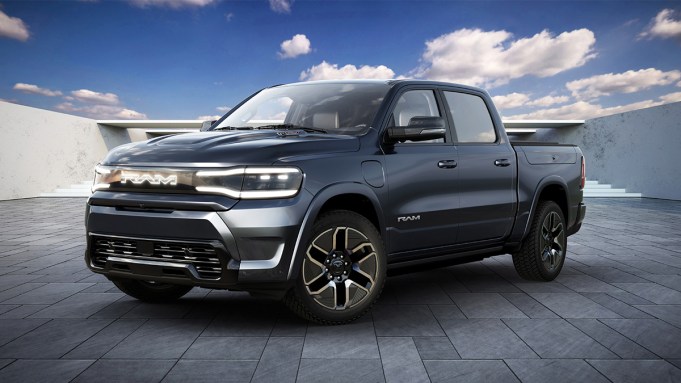It’s taken a while, but Ram is finally ready for its electric future.
The Detroit-based truckmaker has confirmed it will begin production of its first battery-powered model, the 1500 REV, by the end of the year. The new model will be built at one of three Michigan factories that the parent company Stellantis has retooled for EV manufacturing.
Stellantis has spent $235.5 preparing its Sterling Heights Assembly Plant for production of the 500-mile-range 1500 REV, according to a press release. Earlier this summer the factory was shut down for two weeks so that it could be outfitted with EV-specific equipment. This included installing a new conveyor system, reworking the automation system, and retooling and rearranging workstations.
The 1500 REV, which will be Stellantis’s STLA Frame architecture, won’t be the only truck built at the plant. The 1500 Ramcharger, which features an electric powertrain and gas-powered range extender, will also be built there, as will the standard internal combustion 1500. All three versions of the 1500, which is the third best-selling light-duty pickup in America, will roll off the same production line.
Two other Stellantis factories are ready to start building EVs. The company spent $97.6 million preparing its Warren Truck Assembly Plant for production of Jeep’s first U.S. battery-powered model, the Wagoneer S. It’s unclear when production will commence—CEO Antonio Filosa has gone on the record to say it won’t go on sale until its “perfect”— but it’s one of four EVs the brand wants to launch before the end of 2025. Another $73 million has been invested into the Dundee Engine Plant. This facility will build battery trays and other key components for the STLA Frame architecture. Stellantis has poured $406 million into these three factories to prepare them for EV production. (The company’s other big battery-powered model, the Dodge Charger EV, will be built in Windsor, Ontario, Canada.)
The investment is part of Stellantis’s “Dare Forward 2030” electrification strategy. The company has pledged to sell only EVs in Europe and a 50-50 mix of ICE and battery-powered models in the U.S. by the beginning of the next decade. The company remains committed to this strategy at a time when other automakers, including the company’s biggest U.S. rivals, Ford and General Motors, have backed off similar promises. It is Stellantis’ goal to become a carbon net zero company by 2038.


